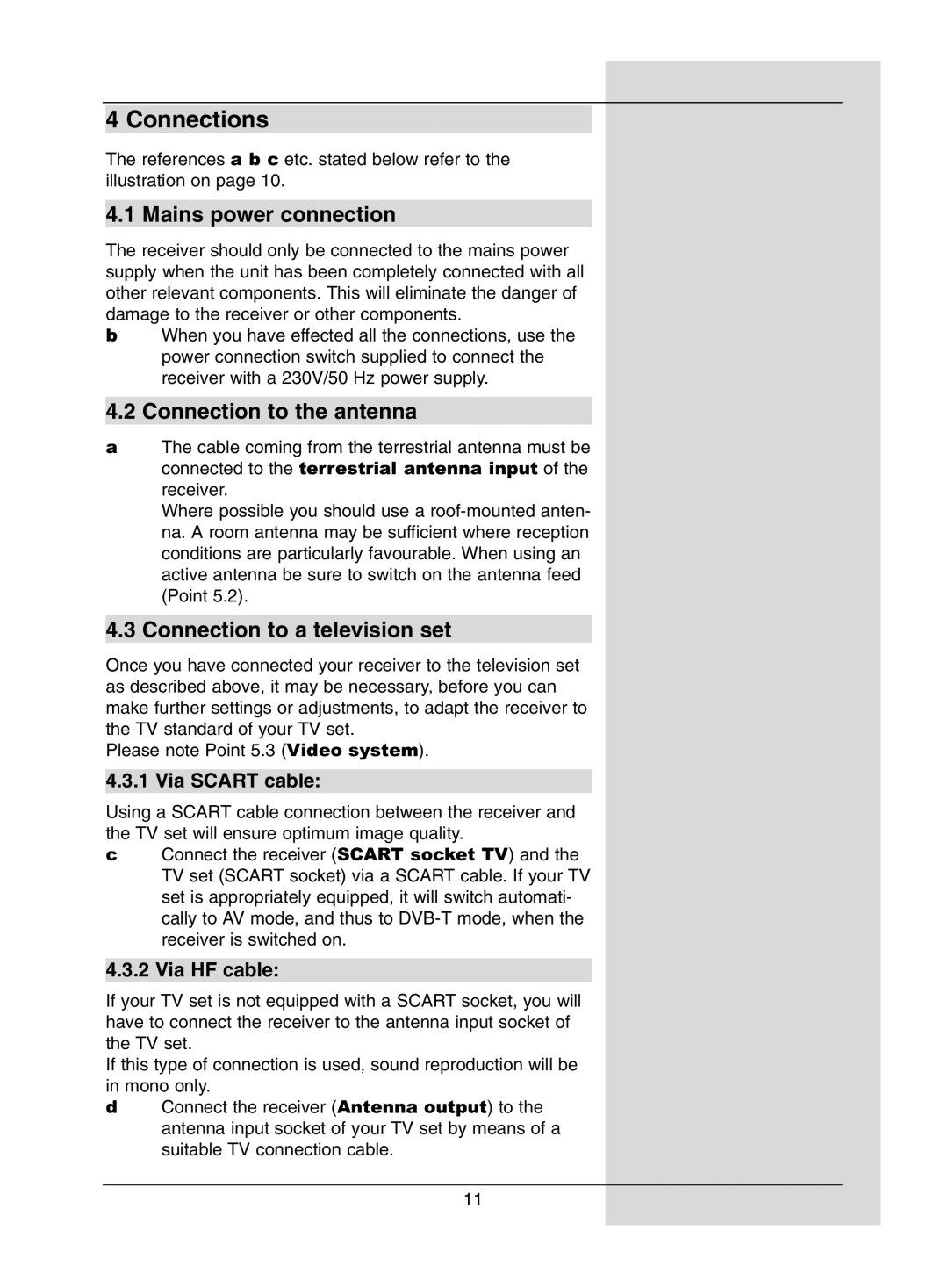
4 Connections
The references a b c etc. stated below refer to the illustration on page 10.
4.1 Mains power connection
The receiver should only be connected to the mains power supply when the unit has been completely connected with all other relevant components. This will eliminate the danger of damage to the receiver or other components.
bWhen you have effected all the connections, use the power connection switch supplied to connect the receiver with a 230V/50 Hz power supply.
4.2 Connection to the antenna
aThe cable coming from the terrestrial antenna must be connected to the terrestrial antenna input of the receiver.
Where possible you should use a
4.3 Connection to a television set
Once you have connected your receiver to the television set as described above, it may be necessary, before you can make further settings or adjustments, to adapt the receiver to the TV standard of your TV set.
Please note Point 5.3 (Video system).
4.3.1 Via SCART cable:
Using a SCART cable connection between the receiver and the TV set will ensure optimum image quality.
cConnect the receiver (SCART socket TV) and the TV set (SCART socket) via a SCART cable. If your TV set is appropriately equipped, it will switch automati- cally to AV mode, and thus to
4.3.2 Via HF cable:
If your TV set is not equipped with a SCART socket, you will have to connect the receiver to the antenna input socket of the TV set.
If this type of connection is used, sound reproduction will be in mono only.
dConnect the receiver (Antenna output) to the antenna input socket of your TV set by means of a suitable TV connection cable.
11
